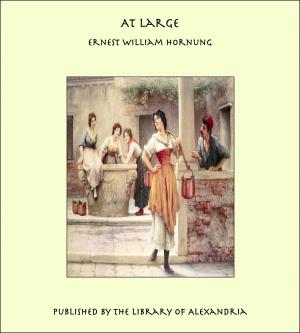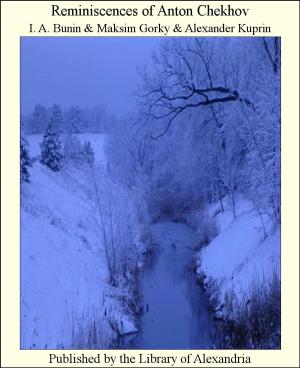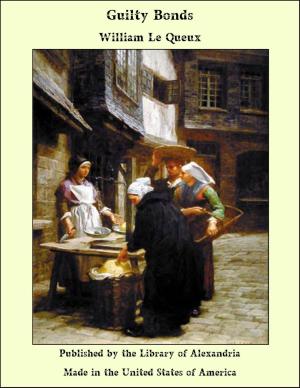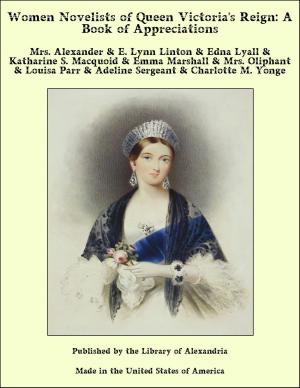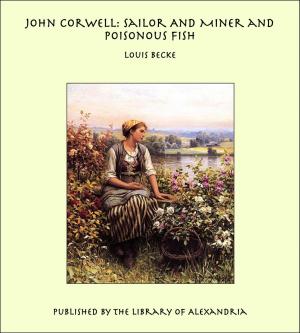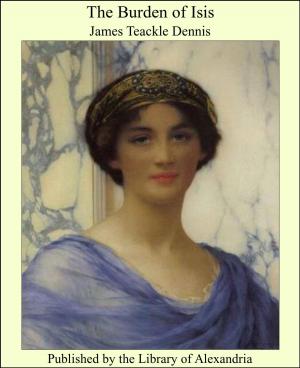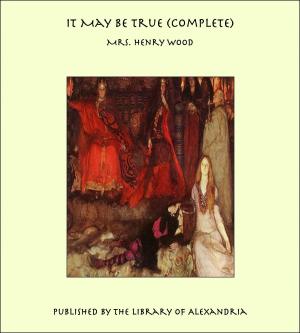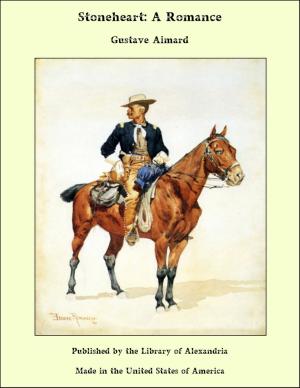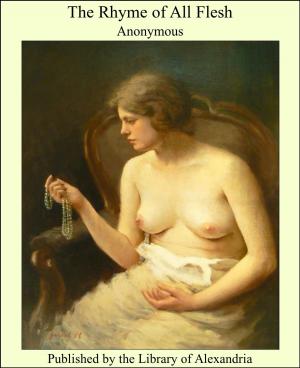| Author: | George C. Williamson | ISBN: | 9781465543769 |
| Publisher: | Library of Alexandria | Publication: | March 8, 2015 |
| Imprint: | Language: | English |
| Author: | George C. Williamson |
| ISBN: | 9781465543769 |
| Publisher: | Library of Alexandria |
| Publication: | March 8, 2015 |
| Imprint: | |
| Language: | English |
ARECENT French writer, in referring to the art of portrait painting, exalted it to the highest rank, proclaiming it the greatest of all arts. He then proceeded, by a series of curious antithetical sentences, to set forth his opinion of portrait painting, stating that it was at once the oldest and the most modern of arts, the easiest and the most difficult, the simplest and the most abstruse, the clearest and the most subtle. His statement, it is clear, contained a definite basis of truth, coupled with a certain interesting extravagance of expression. It is quite true that to draw a portrait was the aim of the very earliest of draughtsmen, whether it was that of his companion or of one of the beasts of chase, and whether he carved it on a bone, or daubed it on the wall of his dwelling. The first endeavour, also, of a child, playing with a pencil, or a brush, is to draw a portrait, and the very simplest outline does occasionally reveal that an idea of portraiture is latent in the mind of the young artist. If only simplicity of line is desired, nothing can be more simple, while at the same time nothing is more perfect, than the outline or profile drawing of such a great artist as Holbein, or the work of some of the early French draughtsmen. At the same time, the subtlety of this draughtsmanship cannot be denied. For complexity and difficulty, portraiture takes a supreme place, and yet, on the other hand, as the Frenchman points out in his antithetical sentences, it is to a certain extent a simple art, and we all know artists who are able with a piece of chalk to suggest an even startling likeness which they would be quite unable to complete into the form of a perfect portrait. Many a painter thinks at first that portraiture is simple and easy, in fact he finds it so, but the older he grows, the more does he realise that the human features are complex in the extreme, and that the variations of expression make the difficulties in the task of portraying them enormous. From very early times, however, there has been a natural desire to have portraits of the persons about us, and to have these portraits in portable form; hence, after a long succession of vicissitudes, has come the miniature. It is perhaps as well, even though the statement has been made over and over again, to emphasize the fact that the actual word miniature has nothing whatever to do with the size of the portrait. We accept it, however, as implying that the portrait is of portable size, and we shall apply it to such a portrait as can lie in the palm of one's hand, ignoring the fact that the word was originally derived from "minium" or red lead, and has come down to us from the little portraits on illuminated manuscripts, outlined or bordered with lines of red. In two countries especially, the art of painting miniatures has flourished, England and France, and in these two countries there have been schools of miniature painters, and a succession of great exponents of the art, while in the other countries of Europe there have only been now and again painters who have devoted especial attention to this branch of their art, and have taken high position in it. It is more especially an English art, because, although for exquisite grace, charming colouring, and dainty conception, the works of the French miniature painters take a high rank, even they must yield the palm for representation of character to the greatest English painter of miniatures, Samuel Cooper. Moreover, in no country but England has there been such a long series of painters in miniature, extending from the sixteenth-century down to comparatively recent times. It has been the fashion to commence a survey of English miniature painters by reference to Holbein, and it is not altogether an unsatisfactory manner in which to start (although Holbein was not an Englishman), because so many of his best works were painted in this country. It must not, however, be forgotten that portrait painting was practised by native English artists in the early part, or at least in the middle, of the fifteenth-century, and although we know very little indeed about these English painters, yet we have many works remaining which must be attributed to them
ARECENT French writer, in referring to the art of portrait painting, exalted it to the highest rank, proclaiming it the greatest of all arts. He then proceeded, by a series of curious antithetical sentences, to set forth his opinion of portrait painting, stating that it was at once the oldest and the most modern of arts, the easiest and the most difficult, the simplest and the most abstruse, the clearest and the most subtle. His statement, it is clear, contained a definite basis of truth, coupled with a certain interesting extravagance of expression. It is quite true that to draw a portrait was the aim of the very earliest of draughtsmen, whether it was that of his companion or of one of the beasts of chase, and whether he carved it on a bone, or daubed it on the wall of his dwelling. The first endeavour, also, of a child, playing with a pencil, or a brush, is to draw a portrait, and the very simplest outline does occasionally reveal that an idea of portraiture is latent in the mind of the young artist. If only simplicity of line is desired, nothing can be more simple, while at the same time nothing is more perfect, than the outline or profile drawing of such a great artist as Holbein, or the work of some of the early French draughtsmen. At the same time, the subtlety of this draughtsmanship cannot be denied. For complexity and difficulty, portraiture takes a supreme place, and yet, on the other hand, as the Frenchman points out in his antithetical sentences, it is to a certain extent a simple art, and we all know artists who are able with a piece of chalk to suggest an even startling likeness which they would be quite unable to complete into the form of a perfect portrait. Many a painter thinks at first that portraiture is simple and easy, in fact he finds it so, but the older he grows, the more does he realise that the human features are complex in the extreme, and that the variations of expression make the difficulties in the task of portraying them enormous. From very early times, however, there has been a natural desire to have portraits of the persons about us, and to have these portraits in portable form; hence, after a long succession of vicissitudes, has come the miniature. It is perhaps as well, even though the statement has been made over and over again, to emphasize the fact that the actual word miniature has nothing whatever to do with the size of the portrait. We accept it, however, as implying that the portrait is of portable size, and we shall apply it to such a portrait as can lie in the palm of one's hand, ignoring the fact that the word was originally derived from "minium" or red lead, and has come down to us from the little portraits on illuminated manuscripts, outlined or bordered with lines of red. In two countries especially, the art of painting miniatures has flourished, England and France, and in these two countries there have been schools of miniature painters, and a succession of great exponents of the art, while in the other countries of Europe there have only been now and again painters who have devoted especial attention to this branch of their art, and have taken high position in it. It is more especially an English art, because, although for exquisite grace, charming colouring, and dainty conception, the works of the French miniature painters take a high rank, even they must yield the palm for representation of character to the greatest English painter of miniatures, Samuel Cooper. Moreover, in no country but England has there been such a long series of painters in miniature, extending from the sixteenth-century down to comparatively recent times. It has been the fashion to commence a survey of English miniature painters by reference to Holbein, and it is not altogether an unsatisfactory manner in which to start (although Holbein was not an Englishman), because so many of his best works were painted in this country. It must not, however, be forgotten that portrait painting was practised by native English artists in the early part, or at least in the middle, of the fifteenth-century, and although we know very little indeed about these English painters, yet we have many works remaining which must be attributed to them



